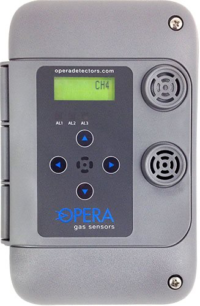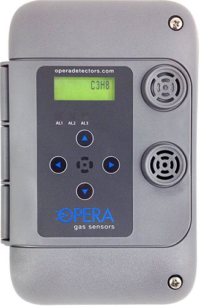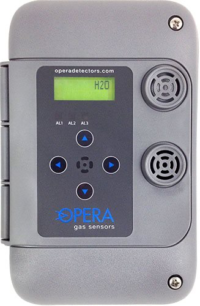
Gas monitoring – Combustible Gases
Catalytic bead type sensors feature a poison filter which reduces the risk of damage and prolongs life expectancy to up to 10 years.
Methane – Natural gas is composed of many gases, methane being the principal component. The gas is lighter than air and so sensors are installed close to the ceiling in rooms that house industrial and commercial burners. Use model 6005 for detection of natural gas leaks in the range of 0-50 percent of the lowest explosive limit (LEL).
Propane – model 6006 for propane leak detection in commercial kitchens, laboratories and for propane stored indoors. Propane is heavier than air so detectors are installed from one to three feet from the ground.
Hydrogen – Hydrogen is generated when batteries are charged, such as lift truck batteries or stand-by power systems. In a small room it can accumulate and create a risk of explosion. In addition, escaping gases trap acids which will corrode metals in the area. Use model 6008 to control exhaust ventilation or warn of an excess build up. Install sensors 1 foot from the ceiling
Combustible organic Vapours – Methane, Propane and Hydrogen sensors are optimized for the target gas where-as the model 6007 will cover a wider range of gases particularly alcohols and solvents.
Gases include;
- Butane
- Pentane
- Hexane
- Octane
- Methanol
- Ethanol
- Iso-Propanol
- Acetone
- Methyl ethyl ketone
- Toluene
- Ethyl aceteate
- Petrol
- Ethylene




